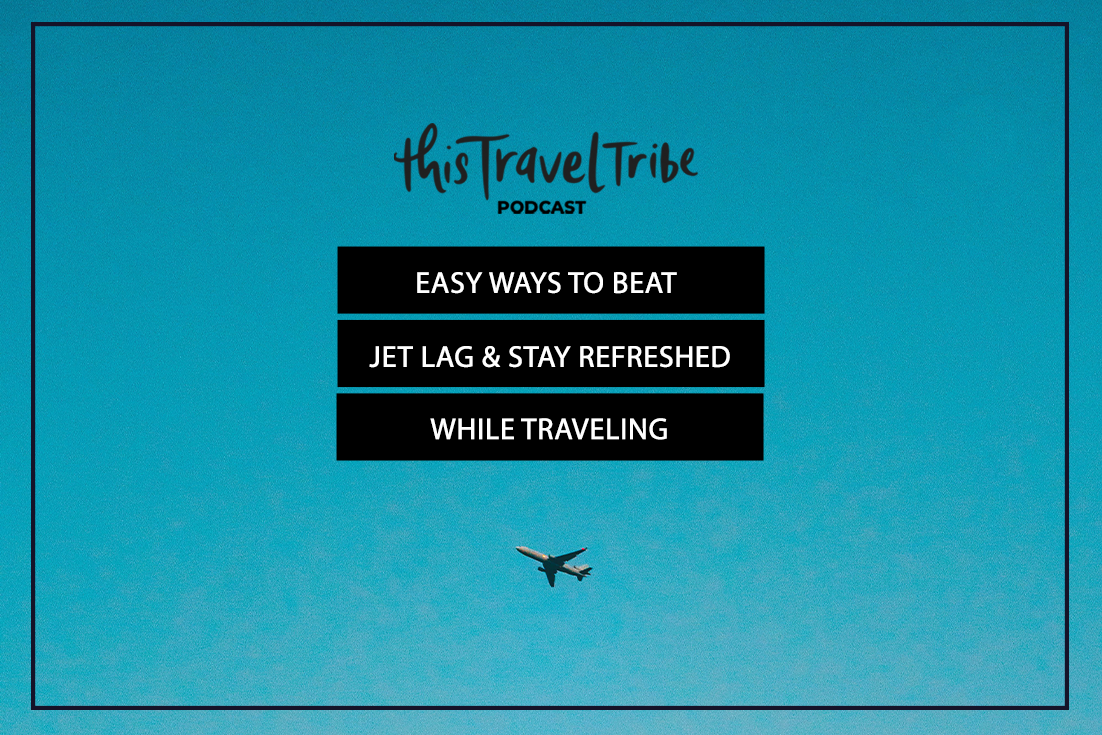Easy Ways to Beat Jet Lag & Stay Refreshed While Traveling
Jet lag doesn’t have to ruin the first day of your trip! In this episode, I’m joined by FlyKitt founder Andrew Herr to uncover why flying makes us feel so awful, and the surprising role inflammation plays. He shares practical, science-backed tips to help you land feeling clear, energized, and ready for adventure!
Below you'll find all the biggest takeaways from our conversation along with Andrew’s best strategies to arrive feeling rested, energized, and ready to explore.
What Jet Lag Actually Is
Most of us assume jet lag is simply our internal clock adjusting to a new time zone. But according to Andrew, there’s a second major factor at play:
Inflammation from Pressure Changes
When a plane takes off, the cabin pressure shifts dramatically. You essentially “climb” to 5,000–8,000 feet in 15 minutes.
This can trigger:
Low energy
Brain fog
Bloating
Swollen legs
General soreness
Even on short flights, people feel these symptoms because their body is reacting to inflammation, not just time zone fatigue.
Lower Oxygen Levels
In-flight oxygen levels drop by around 26%, making your body work harder and increasing stress on your system.
Together, these two factors make circadian rhythm changes even harder.
So yes, shifting time zones matters, but you won’t recover well unless you also manage inflammation.
How to Actually Beat Jet Lag
Andrew explains that beating jet lag comes down to addressing two key areas:
Blocking inflammation
Resetting your circadian rhythm
Here’s what that looks like in practice:
1. Block Inflammation During Travel
FlyKitt’s system uses a combination of ingredients and specific timing to keep inflammation low before, during, and after flights.
What helps reduce inflammation:
Pomegranate extract (polyphenols): triggers your body’s natural protective systems
Vitamin C: an effective antioxidant
Omega-3 fatty acids: help keep inflammation low throughout your trip
Why it matters
If your body is inflamed, your circadian rhythm can’t shift efficiently. Reducing inflammation first makes everything else effective.
2. Reset Your Circadian Rhythm
This is where timing and tools come in. Andrew uses a “concert of strategies” that work together:
Light exposure
Avoid blue light at the wrong times
Use orange-tinted blue light–blocking glasses (they must be orange to block 99% of blue light)
Avoid early-morning or mid-flight light exposure if it doesn’t match your destination schedule
Smart sleep timing
Sleep the right amount on the plane (often less than you think!)
Avoid long naps that make adjusting harder
Meal timing
Your body uses meal timing as a circadian cue.
Avoid eating late before bed
Eat on the schedule of your destination
Use controlled sugar intake to trigger insulin and reset peripheral body clocks
Helpful supplements
Activated B vitamins to help push your energy later
Melatonin + magnesium glycinate to gently shift your sleep schedule earlier
Put together, these tools can shift most people up to 12 hours in a single travel day.
How FlyKitt Simplifies This
Instead of doing calculations yourself, FlyKitt’s app creates a completely customized schedule for:
When to wake up on travel day
When to block light
What supplements to take and when
Ideal meal timing
Optimal sleep windows
You enter:
Your home bedtime
Your destination bedtime
Flight times
A few questions about your caffeine intake, sensitivity, etc.
And the app handles the rest.
Most users report sleeping a full night on their first night abroad!
Do You Need FlyKitt on the Way Home?
Yes, if you want to avoid jet lag on your return. Each kit includes enough for a round-trip, so you can use it for both legs.
Other Tips for Staying Healthy While Traveling
Andrew also shared some fantastic general travel wellness tips that anyone can use:
Sleep Better in Hotel Rooms
Use hangers with clips to close those annoying curtain gaps
Keep the room cold: 67–69°F is ideal for most people
Avoid eating 3–4 hours before bed
Use melatonin only strategically, not nightly
Stay Energized with Smart Movement
Workout in the morning when possible
But truly—work out whenever you can (just not right before bed)
Walk after meals to reduce blood sugar spikes and inflammation
Even 10–15 minutes makes a difference
Eat in a Way That Supports Good Sleep
Prioritize protein + veggies, especially late in the day
Save heavier carbs for earlier meals
Limit fried foods and seed oils to reduce inflammation
Smaller portions help you sleep better (a European secret!)
Manage Stress on the Road
Even 3–5 minutes of:
Deep breathing
Meditation
Light stretching
…can help your body recover better.
Check Out FlyKitt!

